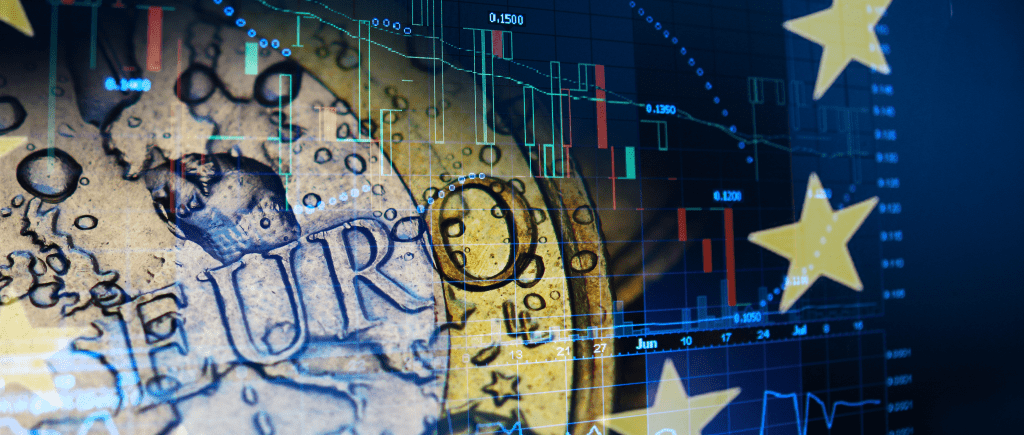Following the relatively data-insensitive June rate cut, European Central Bank (ECB) speakers have stood firm on the message of data-dependency. Next week’s ECB meeting likely to take stock of the available data and compare it to the latest forecast.
Possible rate cut in September
Following the relatively data-insensitive June rate cut, ECB speakers have stood firm on the message of data-dependency. With data having been on the soft side, observers believe the odds are for another cut in September. Next week’s ECB meeting is therefore likely to mainly take stock of the available data and compare it to the latest forecasts, with the press conference likely to be the most interesting part.
ECB policymakers still believe the risks to inflation are to the upside, possibly forcing the ECB to pause any rate cuts in December. The Governing Council may also have some initial discussions on the upcoming Strategy Review. Comments made at the ECB’s recent annual Sintra conference highlighted that some policymakers feel uneasy about the past QE, urging a review of its benefits and the ECB’s commitment to deploy it.
As analysts have long argued, the support for large-scale QE may be less obvious in hindsight given the relatively small impact on inflation while also having unwelcome side effects. This argues, in our view, for much more targeted and temporary interventions in the future, predominantly aimed at financial stability.
The European Central Bank’s next interest rate cut is still a relatively easy decision, but subsequent moves should only come once inflation is clearly heading towards the 2% target. The ECB cut rates in early June but made no commitment about any further moves, arguing inflation was still too high and it lacked the confidence that 2% was within reach.
the first two cuts were easy decisions and continues to maintain this view despite more recent figures showing stubborn wages and services price growth.
If ECB faces no major negative surprises, then based on policymakers’ forecast, there is room for a second cut. A small deviation from the projections would not change this view dramatically.
But even this second cut was not urgent, and the ECB could wait until its next projections are due out in September. There is probably a premium in waiting for a meeting with new forecasts that confirm the picture, but observers would not make that a condition.
Inflation is expected to have slowed to 2.5% last month from 2.6% in May, but the ECB sees a “bumpy” path ahead with figures oscillating around current levels for the rest of the year.
This could make it hard to cut again until figures start showing a more decisive move towards 2%. To continue with cuts, ECB policymakers would need to have some more comfort that we really are going down from 2.5% inflation to something which is closer to 2%.
The ECB’s deposit rate stands at 3.75% and markets are betting on about 40 basis points of cuts over the rest of the year, or between one and two moves, and also see a total of four cuts in the next 18 months.
Economic Growth, French Elections
While economic growth is rebounding modestly and markets are relatively calm, a first round election victory by the far right in France complicates the picture. More political turbulence is possible given several countries need painful fiscal adjustments after years of excessive spending. In Europe as a whole, there are five countries in excessive deficit procedures. It is not going to be easy in any of those five countries and none has ever expected that reducing these deficits will be easy.
But some ECB officials played down any talk the ECB could activate an emergency bond purchase scheme in case political stress reverberated in financial markets.
ECB officials have said markets moves need to be unwarranted and disorderly for the ECB to step in, and events so far failed to meet those criteria.
It is very important that policymakers don’t give any signal to the market that they have some kind of automaticity, limits, or hard constraints in what they do. The rule is that it must be unwarranted and disorderly. It will be a judgment call.
Euro Reacts to Powell’s Speech
Following part one of Powell’s testimony, the Euro’s major pair is trading at 1.08086; down −0.14%. On Monday, the EUR/USD pair failed to make a decisive move in either direction and closed the day virtually unchanged. The pair holds steady slightly above 1.0800 early Tuesday as investors stay on the sidelines while waiting for Fed Chairman Jerome Powell’s testimony before the Senate Banking Committee.
 Noor Trends News, Technical Analysis, Educational Tools and Recommendations
Noor Trends News, Technical Analysis, Educational Tools and Recommendations





